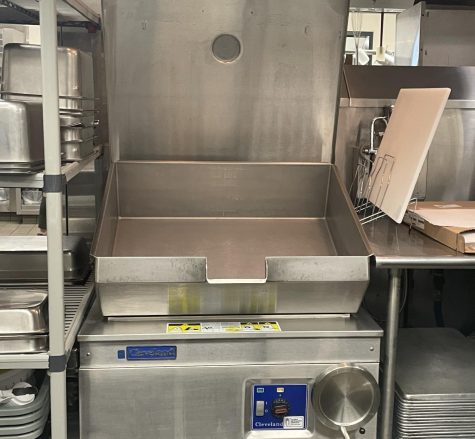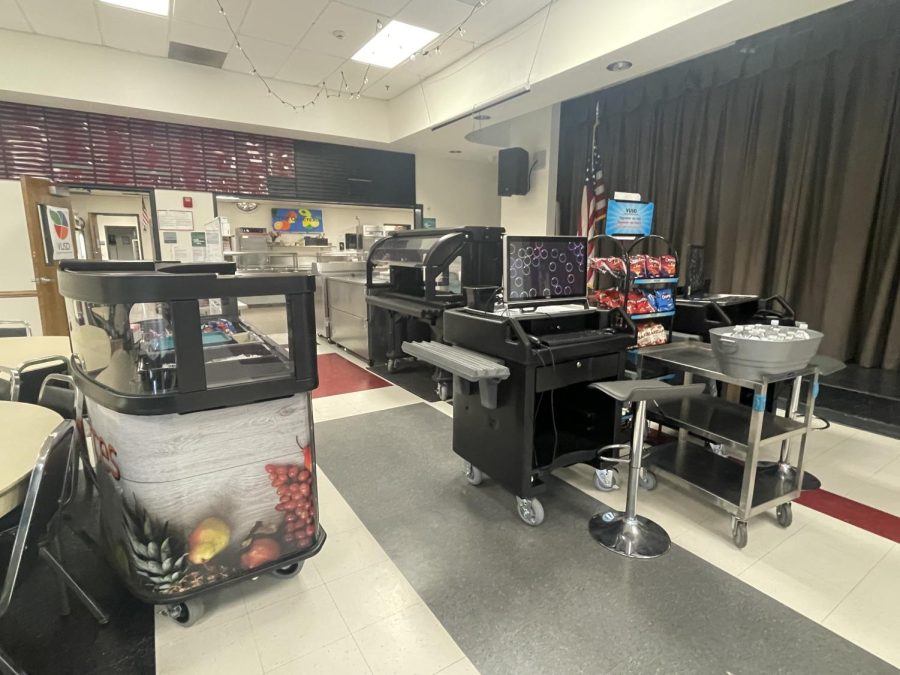VUSD to improve quality of school lunches
The VUSD will change its school cafeterias to facilitate changes in meals for the 2023-24 school year. Photo by: Alejandro Hernandez
April 11, 2023
School lunch changes to begin in the 2023-24 school year
In the 2021-22 school year, the VUSD Food and Nutrition Services Department department began transitioning the district’s school lunches to be fresher, reducing the amount of pre-packaged food served. As a result, most middle and high schools in the district will install tilt skillets to accommodate an increase in cooking safely, sandwich bars serving freshly-prepared sandwiches and begin to serve nearly exclusively foods made with whole ingredients. VHS already has a tilt skillet installed and an operational sandwich bar but will follow suit with the VUSD in making nutritional changes to student meals; the school will serve fresher foods cooked with raw ingredients.
VUSD Director of Food and Nutrition Services Kara Muniz said, “We want to move towards more scratch cooking, [with] raw ground beef and chicken. We do a lot of speed scratch [cooking], which means most of our meats come in cooked, but we add stuff to them. We’re really getting away from packaged food. Right now, we have two items that are packaged; we [carry] a pan dulce that students absolutely love and a muffin. Next year, we will make homemade muffins, so we’ll have one [pre-packaged] item next year.”

Muniz said, “The two products we are planning to purchase raw, [ground beef and chicken], will cost about 40 percent [more] than the current cooked product. These two products will only be used once a month, so it should not impact us financially. As we look to more whole foods, we will have to make sure it is [of] reasonable cost.”
Denzel Vo ’26 said, “Changing to fresher food is a positive change in our school lunches, especially when some of these processed foods may not be healthy for a young demographic.”
VUSD observes legal caloric and dietary requirements for all of its students as set by the USDA, though the requirements are relative to their grade levels. As for high school students, they are to have an average of 750 to 850 calories per lunch meal over a school week.
Muniz said, “The less processed food we provide to students, the better, and starting off with non-packaged [foods] and moving towards more raw [ingredients] is what’s going to get us there. We cannot, as a district, say we’re going to go from [serving] completely processed food to [cooking] raw [food] overnight. It takes time and it takes training. We have to be very responsible when we are serving stuff from the raw state. [But] health wise, the less chemicals that go into [foodstuffs], [the] better [it is] for you, and that’s our goal. We want whole foods for our students.”








![Lindsay Guzik, new assistant principal said, "I am settling in [at VHS] pretty well. I know a lot of the students, so that makes it a little bit easier coming from Cabrillo, and it's been nice to see them all grown up." Photo by: Abraham Kassa](https://thecougarpress.org/wp-content/uploads/2025/09/IMG_9728-300x200.jpg)